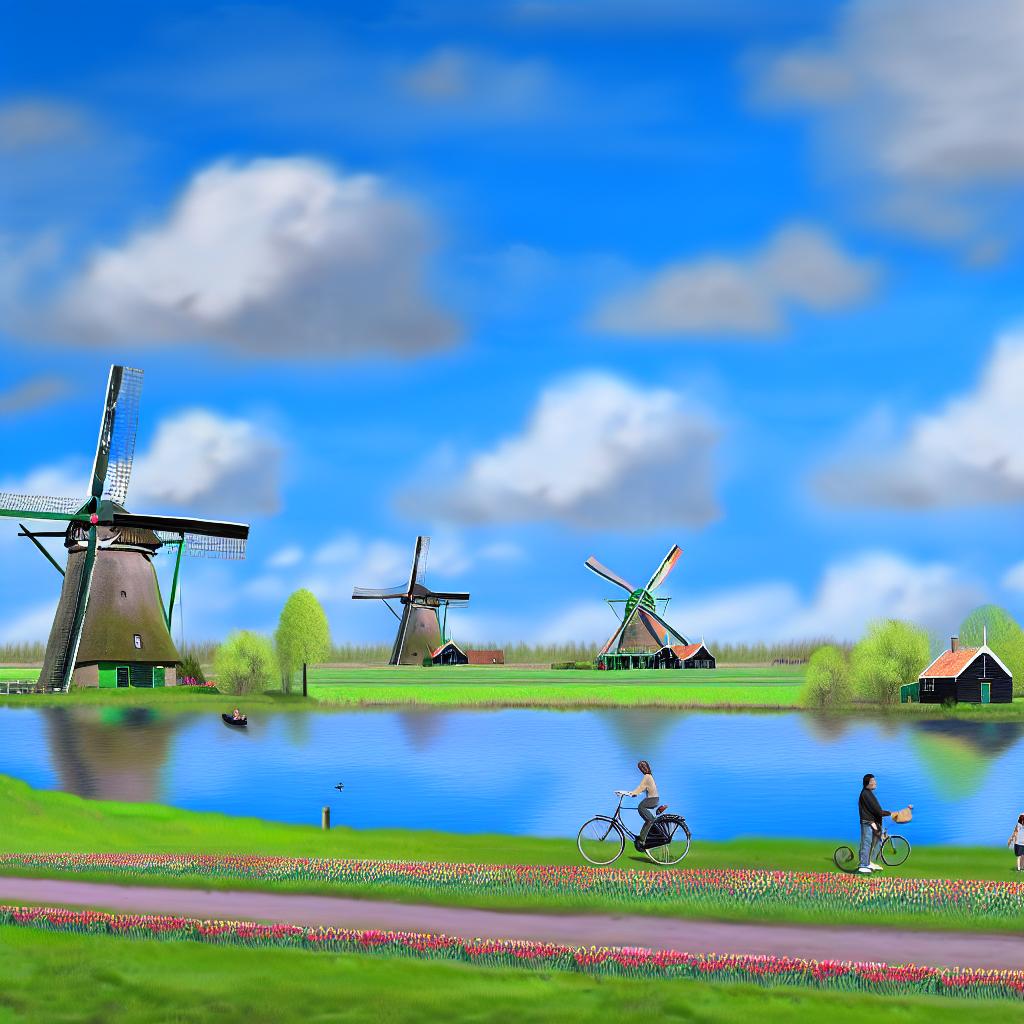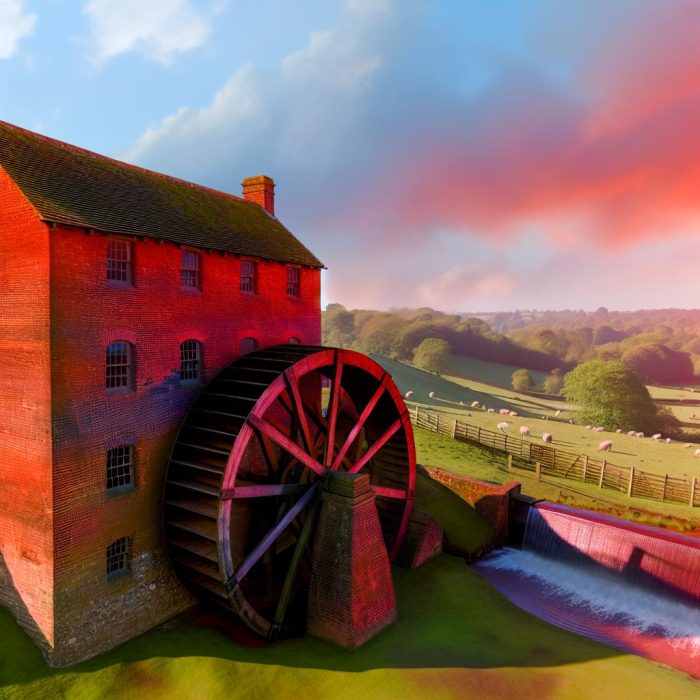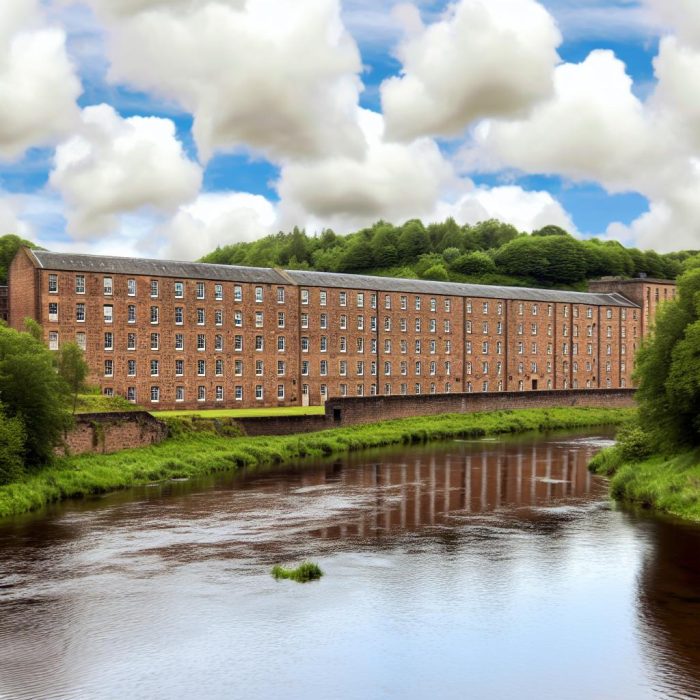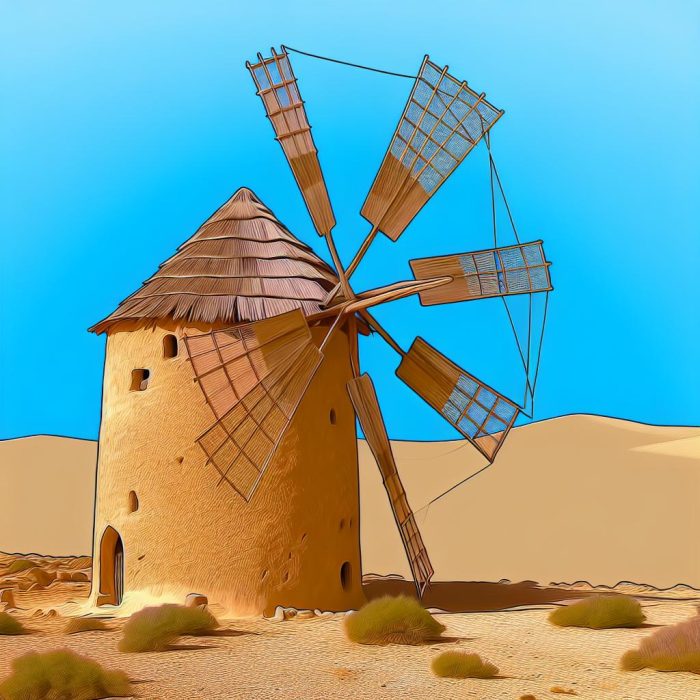The Windmills of Kinderdijk
The windmills of Kinderdijk stand as a beacon of Dutch innovation and mastery in water management. Nestled in the scenic province of South Holland, close to the quaint village of Kinderdijk, these windmills form an integral part of the cultural legacy of the Netherlands. This region offers a breathtaking vista dominated by an array of windmills, preserved meticulously to retain their original charm.
Historical Significance
The construction of the Kinderdijk windmills commenced in the early 18th century, driven by a fundamental need: water management. A significant portion of the Netherlands lies beneath sea level, necessitating ingenious methods to ward off flooding. The windmills, therefore, were vital in their role to efficiently pump water from polders – low-lying lands reclaimed from water bodies – to the rivers on the other side of the dikes. This innovative system was a pioneering model of water management, earning admiration and scholarly study for centuries. The ingenuity displayed by these structures laid the groundwork for future advances in hydraulic engineering.
UNESCO World Heritage Site
The recognition of the Kinderdijk windmills by UNESCO as a World Heritage Site in 1997 highlights their pivotal role in Dutch history and their influence on hydraulic engineering techniques worldwide. This area exemplifies the Netherlands’ historic and ongoing struggle against water, illustrating the symbiotic relationship between the Dutch people and their environmental challenges. The UNESCO status not only preserves the windmills but also emphasizes their significance as a global treasure of collective human endeavor against nature’s forces.
The Structural Design
Dominantly constructed from brick and wood, the windmills of Kinderdijk exhibit the traditional Dutch architectural prowess. Each windmill exemplifies a harmonious blend of form and function, engineered to withstand the challenging conditions of their environment. The strategic positioning of these windmills was meticulously planned to optimize the natural wind patterns, ensuring they operated at maximum efficiency. The use of durable materials and thoughtful design reflect a deep understanding of aesthetics and functionality, a dual purpose fulfilled brilliantly by Dutch engineers.
The intricate mechanism inside each windmill is a testament to the detailed craftsmanship of the era. The internal gears, constructed with precision, utilize wind energy to drive the enormous pumps that regulate the water levels of the surrounding areas. This delicate engineering marvel underscores the importance of sustainable solutions that have served communities for generations.
Visiting Kinderdijk
For those intrigued by these majestic edifices, Kinderdijk presents a wealth of exploration opportunities. Visitors can meander through designated pathways, either on foot or by bicycle, allowing for an immersive encounter with the site. These paths provide a closer look at the windmills, revealing their grandeur and operational intricacies.
Guided tours are available, offering a comprehensive understanding of the historical context and technical operation of these marvels. These tours delve into the history and significance of water management in the Netherlands, enlightening visitors about the concerted human efforts in taming water.
A dedicated visitor center enriches the experience, presenting deeper insights into the heritage and technological sophistication inherent in the windmills. Exhibits and multimedia presentations offer educational content, bridging the past with present-day applications of hydraulic engineering.
To assist in planning a visit, detailed information regarding visitor hours and ticket prices can be found on official tourist platforms such as the Kinderdijk official website. This invaluable resource assists travelers in tailoring their trip to maximize their understanding and appreciation of the site’s significance.
The Kinderdijk windmills endure as an iconic symbol of the Netherlands’ relentless quest for water management solutions. They embody a seamless integration of technological advancement, respect for nature, and preservation of cultural heritage. The convergence of these elements presents Kinderdijk not just as a destination, but as an enlightening expedition into the annals of human ingenuity and resilience.
The timeless appeal of Kinderdijk lies in its reflection of a universal human narrative: the continuous struggle and triumph over environmental challenges through innovation and unity. The windmills remain a source of inspiration, a reminder that with clever engineering and meticulous design, even the daunting forces of nature can be successfully harnessed. Through these storied structures, visitors and scholars alike can witness the realization of a dream that transcended mere survival. It became a testament to enduring human creativity and resourcefulness, steadily churning the wheels of progress over centuries.



